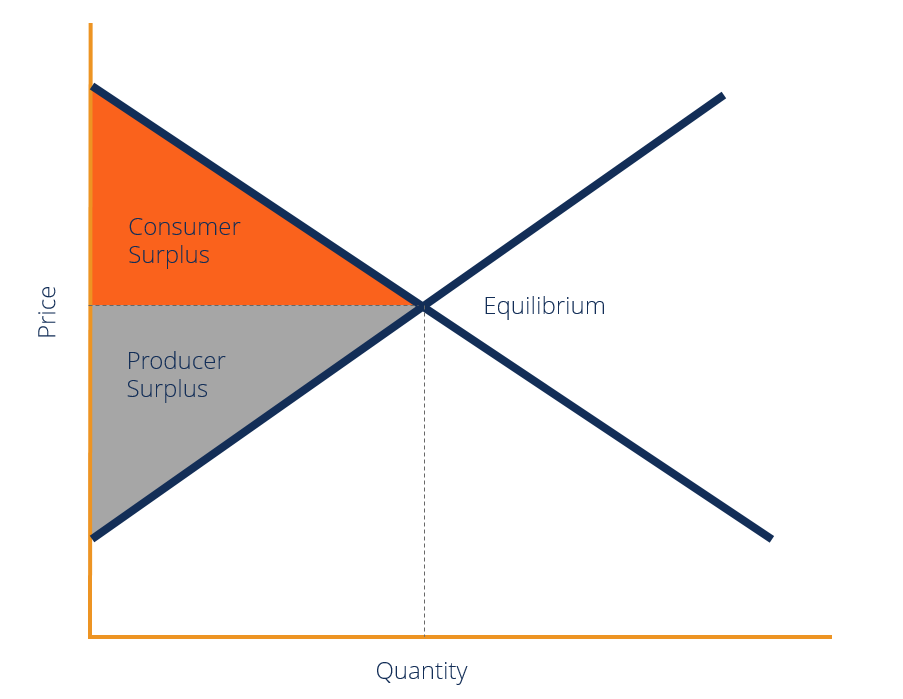🛒 Consumer Surplus
✅ Definition:
Consumer Surplus is the difference between the maximum price a consumer is willing to pay for a good or service and the actual price they pay in the market.
Consumer Surplus = Willingness to Pay − Actual Market Price
It represents the extra benefit or value consumers receive when they pay less than what they were willing to pay.
📊 Example:
Since consumer surplus is considered from customer point of view, consider the demand curve.
The equilibrium price is the price at which the quantity demanded by consumers equals the quantity supplied by producers.
Let us say the equilibrium point is at ₹70 but the highest price as per the demand curve that the customer was ready to pay was ₹100, then the consumer surplus is ₹30
🏭 Producer Surplus
✅ Definition:
Producer Surplus is the difference between the actual price a producer receives for a good or service and the minimum price they are willing to accept (which often equals their cost of production).
Producer Surplus = Market Price − Minimum Acceptable Price
It reflects the additional benefit producers receive for selling at a price higher than their minimum acceptable price.
📊 Example:
Since producer surplus is considered from seller point of view, consider the supply curve. As the price of the product increases, the seller makes more quantities of the product with the hopes of making more profit.
The equilibrium price is the price at which the quantity demanded by consumers equals the quantity supplied by producers.
Let us say the equilibrium point is at ₹70 but the lowest price on the supply curve that the customer was ready to sell at was ₹50, then the producer surplus is ₹20
📈 Graphical Representation:

Imagine a standard supply and demand graph:
-
The demand curve slopes downward, representing consumer willingness to pay.
-
The supply curve slopes upward, showing producer costs.
-
The equilibrium price is where the supply and demand curves intersect.
-
Consumer Surplus = Area above the price line and below the demand curve.
-
Producer Surplus = Area below the price line and above the supply curve.